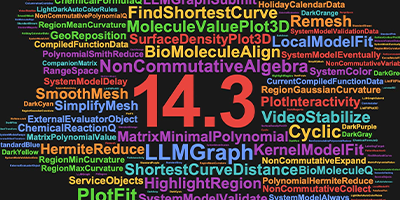Benoît Mandelbrot
Twenty-five years ago, the Mandelbrot set was published on the cover of Scientific American, in connection with an A. K. Dewdney Computer Recreations column. A few days ago, the original Mandelbrot set column was re-released.

The Mandelbrot set became a rite of passage for anyone programming mathematical images. For me, I was making images on a Mac Plus, and sent some of them out in a zine I was running at the time. As a result, Piers Anthony asked me to help get fractal images and facts for his Mode series. In the course of this, Piers and I asked for and received permission to use the Mandelbrot set from Benoît himself. “You probably don’t need my permission, but I’m happy to grant it to you.”

Benoît Mandelbrot died on October 14, 2010, at the age of 85. He is being remembered worldwide: The New York Times, Nature, Wired, Popular Science, BBC News, PCWorld, and many other places.
In his seminal account, The Fractal Geometry of Nature (1982), Mandelbrot generalized the concept of dimension to include fractional values, which could be used to describe irregular geometric shapes such as coastlines, clouds, and charts of stock prices. Fractal geometry is still not accepted as a rigorous subject by some mathematicians, who regard some of its constructs as “pathological”. By his own account, Mandelbrot traced the origin of his concept of fractals to a question he first encountered as a student: How long is the coastline of Britain? He was surprised to discover that this depends on the scale and resolution of the map one is looking at. One map may show a fairly smooth representation of the coastline, but zooming in to a finer scale will reveal jagged edges that add up to a longer coastline. And zooming in further leads to an even longer coastline. In the 1950s, Mandelbrot proposed a new way to quantify the boundary curve of such irregular objects. He defined the fractal dimension, ![]() where N(ε) is the number of self-similar pieces of size ε needed to approximate the whole structure. (This is closely analogous to the Hausdorff dimension for metric spaces.) The consensus result for the fractal dimension of the British coastline is around 1.26, which can be interpreted as about one-fourth of the way between a one- and a two-dimensional boundary.
where N(ε) is the number of self-similar pieces of size ε needed to approximate the whole structure. (This is closely analogous to the Hausdorff dimension for metric spaces.) The consensus result for the fractal dimension of the British coastline is around 1.26, which can be interpreted as about one-fourth of the way between a one- and a two-dimensional boundary.
Many of us at Wolfram Research have written about fractals. The Wolfram Demonstrations Project has 170 fractal Demonstrations at the moment. Michael Trott has detailed many fractals in his Mathematica GuideBooks. For example, below is a fractal based on Gaussian maps.

Here’s Stephen Wolfram, from A New Kind of Science, page 934: “The Mandelbrot set introduced by Benoît Mandelbrot in 1979 is defined as the set of values of c for which such Julia sets are connected. This turns out to be equivalent to the set of values of c for which starting at z = 0 the inverse mapping z -> z2 + c leads only to bounded values of z. The Mandelbrot set turns out to have many intricate features which have been widely reproduced for their aesthetic value, as well as studied by mathematicians. The first picture below shows the overall form of the set; subsequent pictures show successive magnifications of the regions indicated. All parts of the Mandelbrot set are known to be connected. The whole set is not self-similar. However, as seen in the third and fourth pictures, within the set are isolated small copies of the whole set. In addition, as seen in the last picture, near most values of c the boundary of the Mandelbrot set looks very much like the Julia set for that value of c.”

S. M. Blinder’s Demonstration, “Magnified Views of the Mandelbrot Set”, taken from the computer-generated images published by Peitgen and Richter, shows the complex fractal structure of the boundary as the picture is magnified:

Seems like just a few days ago that I wrote blog posts with fractal mazes and cool points on the complex plane. For years, I’ve never failed to be amazed by the beauty of these worlds. They were a surprise for Benoît himself—he thought some of his initial printouts might be an error. To get a sense of the vastness, a great video is “Trip to e214”. Magnifying an electron to the size of the universe needs a magnification of 1042. This video magnifies the target mandelbulb 10214 times.

Benoît, thanks so much for giving me that permission all those years ago. You were the first famous mathematician I corresponded with. It meant a lot to me.



Comments